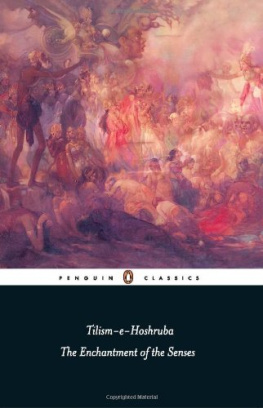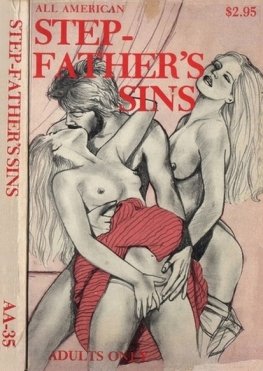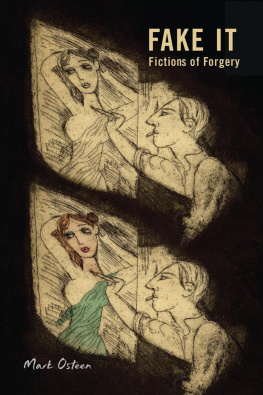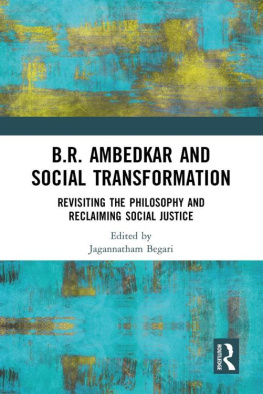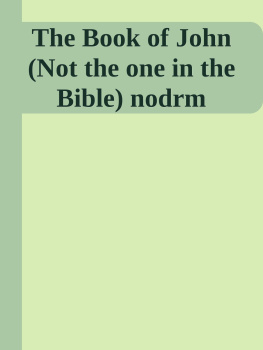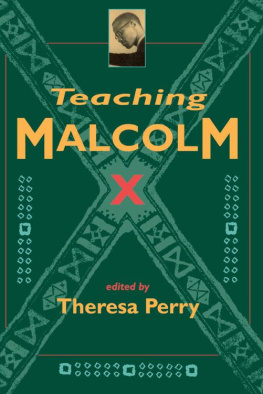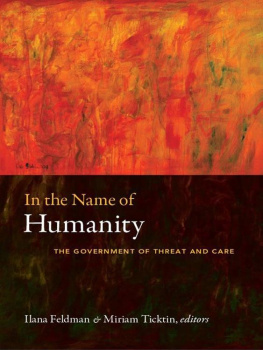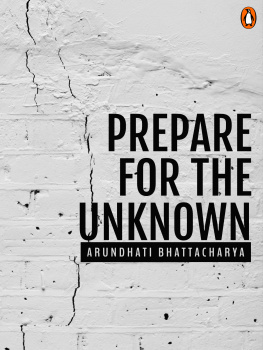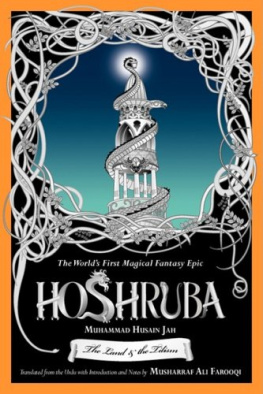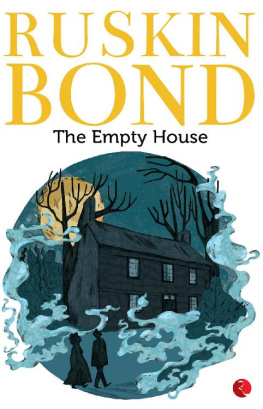ABRIDGED AND TRANSLATED BY
SHAHNAZ AIJAZUDDIN
Tilism-e-Hoshruba
THE ENCHANTMENT OF THE SENSES
PENGUIN BOOKS
Contents
TILISM-E-HOSHRUBA
Shahnaz Aijazuddin has spent several years researching the Tilism-e-Hoshruba and is deeply interested in Urdu and Persian. She has been a columnist with a leading Pakistani newspaper and has written for several other publications in India and Pakistan. A collection of her articles, Lost from View , was published in 1994. Shahnaz Aijazuddin is married and has three children. She lives in Lahore, Pakistan.
For my parents
Nayyar Agha and Col. Agha Asghar Ali Shah
my keystones to the Tilism
Introduction
The dastan of Tilism-e-Hoshruba is to Urdu literature what Homers epic poems were to Greek literature and what A Thousand and One Nights were to the Arabian bardic tradition. For years, it was believed that the Tilism-e-Hoshruba was translated from an original Persian version composed by Faizi to entertain the Mughal emperor Akbar. This was due to the established tradition of giving the credit for a dastan to an irreproachable source to establish its credibility as a historical document. It is now almost certain that the bulk of the Tilism dastans were composed not in the sixteenth century but later, in that unique period of aesthetic refinement and cultural decadence which distinguished Lucknow as the capital of the former kingdom of Awadh. The storyline of the Hoshruba chronicle was probably delineated by one Mir Ahmed Ali, a dastangoh or narrator from Lucknow who later moved to Rampur. The story was further embellished by his disciples like Amba Prasad Rasa and numerous other dastangohs, including Rasas son, Ghulam Raza.
In the late nineteenth century, the Naval Kishore Press in Lucknow commissioned dastangohs to compile the primarily oral tradition of dastans into written form. The first to be published were the seven volumes of the Tilism-e-Hoshruba , already very popular in its oral form. For this purpose, the canny Munshi Naval Kishore employed Muhammad Husain Jah, a leading dastan narrator and marsia reciter in Lucknow. Jah was familiar with the Hoshruba chronicles and composed the first four volumes of this classic for publication. Ahmed Husain Qamar, another dastan professional, wrote the final three volumes. Qamar had a longer association with his distinguished patron Naval Kishore and continued to compose other Tilism dastans.
Although the Tilism-e-Hoshruba is a narrative complete in itself, it is deemed to be a sequel to the original epic of the legendary Persian hero, Emir Hamza. The Hamza dastan is said to have originated in eleventh-century Persia and was greatly influenced by the national epic Shahnama the Story of Kings. The story of Hamza is derived from the life of a real-life heroHamza bin Abu Muttalib, the paternal uncle of the Holy Prophet Mohammad. The original Hamza was known to be the strongest man in his tribe, a warrior, a hunter and an outdoor man. The fictional Hamza travels to Persia where he fights the enemies of the emperor Nausherwan and is later trapped in Qaf, the land of jinni and fairies for fourteen years. The last part of Hamzas story involves his return to Arabia. Here, the fictional Hamza becomes the real Hamza bin Abu Muttalib who defends his nephew, the Holy Prophet, against the kafirs of Mecca and is subsequently martyred at the Battle of Uhud.
The Hamza stories travelled through the Middle East and Central Asia and gained immense popularity. Inevitably, the itinerant dastan narrators added local touches or nuances to the recited text to broaden its appeal. This was particularly apparent during the spread of the Hamza legend in India. The emperor Akbar gave the Hamza story an imperial stamp of acceptance by commissioning a series of 1600 illustrations, painted in the Perso-Mughal miniature style, but on cloth. The size of each illustration and the use of cloth rather than paper was done to allow each illustration to be unfolded simultaneously before the audience while the narrative was being recited.
Gradually, over the centuries, dastan narration became an intrinsic part of court ritual in India. It became increasingly popular in an age when the self-indulgent philosophy to live only for the moment had permeated from the monarch through the aristocracy to all levels of society. Story-tellers were as essential a feature of the entertainment at a royal court or of a nobleman as were retinues of musicians, singers and courtesans. They enjoyed a mass appeal that encouraged the narrators to tailor their stories to suit their audience. The original Hamza stories were translated from Persian into Urdu and spawned another genre of epic fantasies known as the Tilism dastans. Emir Hamza remained the pivotal character, but now was supported by his dynasty of sons, grandsons and great grandsons, all of them like their illustrious forbearbrave, chivalrous and stunningly handsome.
The word tilism or magic was applied now to describe magic-bound lands created by an ancient pantheon of gods such as Samri and Jamshed, and in some cases, by sages. The enchantments the dastangohs contrived in their narratives were complex creations unlike the simpler magic in the original Hamza story. Tilism dastans usually involved a quest for the Lauh-e-Tilismthe magic keystone closely guarded by the ruler of the Tilism. Only the person destined to vanquish the Tilism, known as the Tilism Kusha, was able to find it. To gain it, the keystone demanded some sort of sacrificeusually of bloodbefore it yielded its secrets to the Tilism Kusha and guided him.
Although at first glance the Tilism-e-Hoshruba story seems to be the metaphor for the advent of Islam in India, Hoshruba is in a time and place of its own. Its villains are sorcerers or sahirs and it was therefore popular with every religious sect. Its backdrop is more Central Asian and Middle Eastern than Indian. Its Muslim heroes are not averse to drinking wine even if it was served by one of their own faith. There is another view that the Tilism dastans had a hidden, esoteric dimension and that a tilism was a metaphor for the real world. The vanquishers are the people of this world and their hearts are the keystones that guide them in their journey. The theory applies equally to the invisible worlds in the dastans. Most dastan scholars though are sceptical about this view and maintain that the composers had no other agenda than to entertain their secular audience.
In volume two of Tilism-e-Hoshruba , Hamzas great grandson Iraj goes through an elaborate procedure to vanquish the Tilism of Mirrors. He is guided by the keystone to act according to the hours of the day that correspond to the signs of the zodiac. Similarly, recurring expressions like the rust of disbelief dissolved from the mirror of the heart have a resonance in Sufi thought. There is perhaps a need to research these aspects of the stories for their deeper meanings.
Whether or not they were influenced by Sufi thought, the composers of the tales of Tilism-e-Hoshruba were endowed with intelligent, imaginative and febrile minds. They competed with each other to make their dastans lengthier and increasingly elaborate, which explains the sheer bulk of the final text when printed. Although they were not soldiers, their understanding of military strategy and the use of weaponry was immense. They were not statesmen but were aware of statecraft and the art of diplomacy sufficiently enough to capture and hold their select and discerning audience. They were as familiar with the names of womens costumes and jewellery as they were with the names of foods sold in Lucknow fairs.
As in most classics the characters created in Tilism-e-Hoshruba outlived their creators and were complex, almost split personalities. Hamzas childhood companion and trickster Amar ayyar has been given a key role in the epic. While Hamza waits in the sidelines at Mount Agate, having occasional skirmishes with the false god Laqas forces, it is Amar who accompanies Hamzas grandson Asad into the Tilism to vanquish it. While Asad Sherdil languishes in Afrasiyabs prison, Amar is left to make most of the alliances with powerful sorcerers. He is much ridiculed for his greed, his low birth and ugly form, and yet endears himself with his sharp wit and audacious disguises. Amar resorts to the most underhand, ruthless and rapacious behaviour but remains the most popular and memorable character with dastan aficionados.

